Key takeaways:
- Selective mutism is an anxiety disorder affecting children’s communication in specific social situations, often leading to feelings of isolation.
- Symptoms include difficulty speaking in certain contexts, anxiety during communication, and non-verbal cues like avoiding eye contact.
- Effective relaxation techniques, such as deep breathing, mindfulness, and progressive muscle relaxation, can help manage anxiety and empower individuals to express themselves.
- Planning and preparation strategies, including outlining, rehearsing in supportive environments, and incorporating self-care, can significantly reduce anxiety before speaking events.
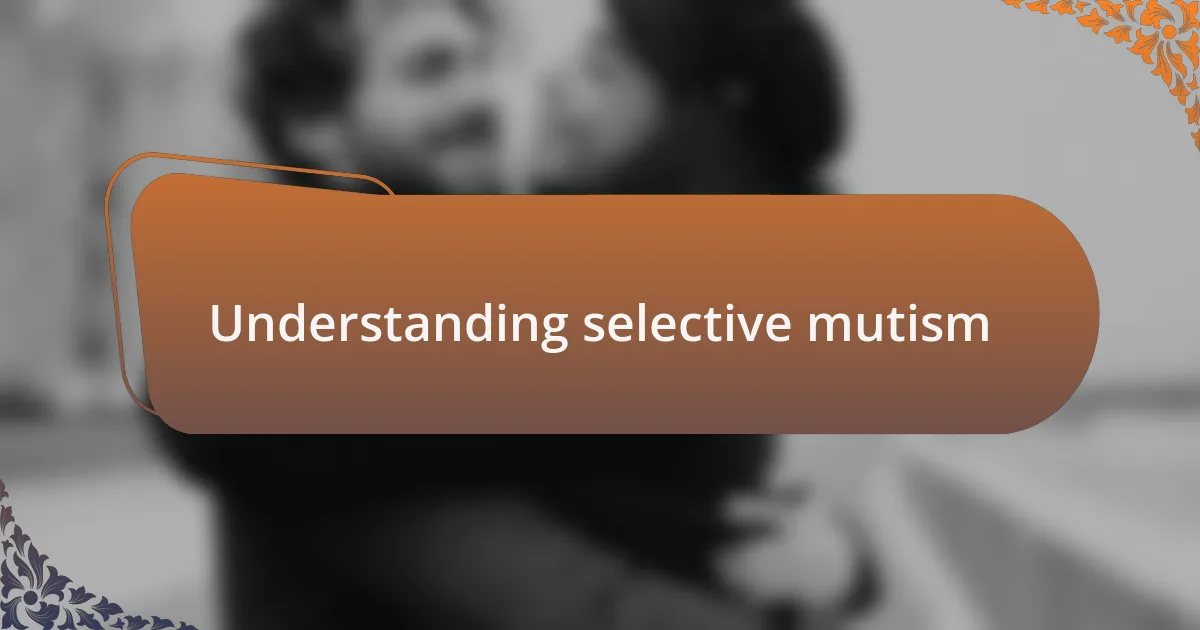
Understanding selective mutism
Selective mutism is a complex anxiety disorder that primarily affects children, making communication in specific social situations incredibly difficult. I remember when a friend’s child struggled in class, unable to speak even though she was lively at home. It’s heart-wrenching to see someone so capable of expression become paralyzed by fear in certain contexts. Could you imagine the frustration of wanting to talk but feeling your voice is trapped?
At its core, selective mutism isn’t a choice; it’s an overwhelming response to anxiety that can lead to feelings of isolation. I’ve seen parents feel helpless, wishing they could ease their child’s discomfort. It’s essential to recognize that these children are often just as eager to connect as their peers but are hindered by a silent barrier they cannot easily overcome.
The symptoms of selective mutism can vary but usually involve an inability to speak in certain settings, which can affect social relationships and academic performance. I think back to another instance where a young boy silently observed his classmates during group activities, desperately wanting to join but overwhelmed by anxiety. What strategies could help him feel secure enough to express himself? Exploring supportive approaches can make all the difference in a child’s ability to eventually break through that silence.
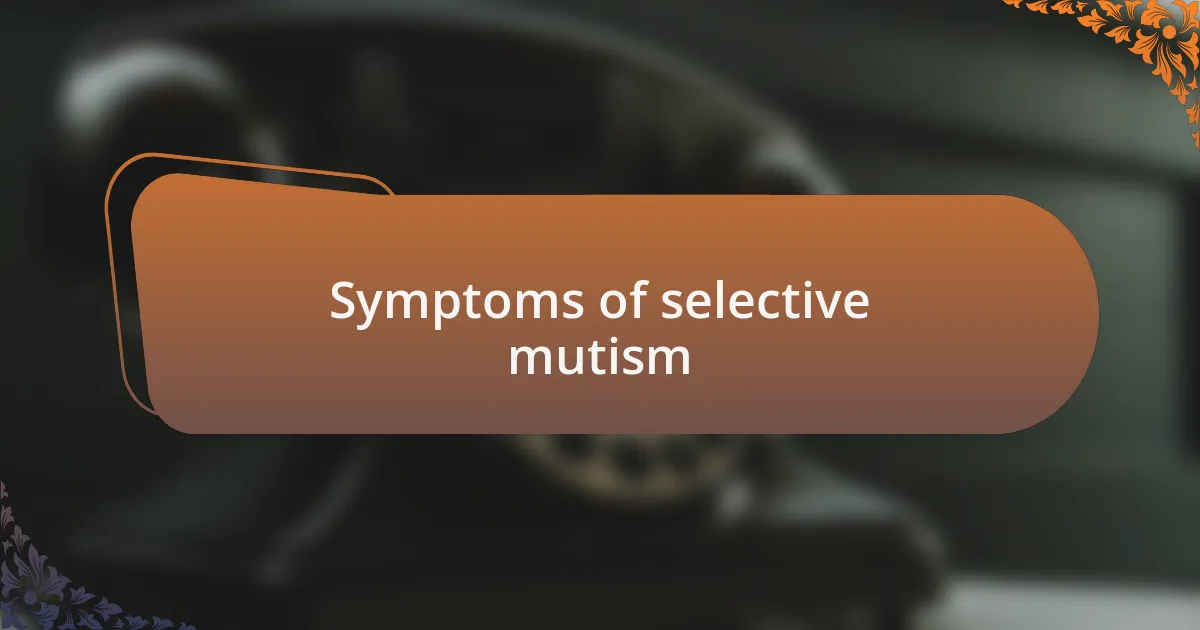
Symptoms of selective mutism
The hallmark symptom of selective mutism is a persistent difficulty in speaking in specific social situations, despite being able to communicate comfortably in other settings. I recall meeting a young girl who could chat freely during family gatherings but froze when it came time to introduce herself to new friends at school. It made me wonder: how do we help children like her find their voice in intimidating environments?
Another significant symptom is the overshadowing anxiety that accompanies silence. I once watched as a boy was asked to read aloud in class, and the tension was palpable. The way he gripped his chair and stared at the floor illustrated a deep fear that kept him from speaking, raising the question of how deeply anxiety can impact a child’s self-esteem and willingness to engage.
Additionally, selective mutism often manifests in non-verbal cues, such as avoiding eye contact, fidgeting, or isolating oneself from group activities. I’ve seen children who, despite being physically present, seem worlds away, lost in their own thoughts. It’s a haunting reminder that they may want to participate but feel as though there’s an invisible wall holding them back. How do we break down those barriers?
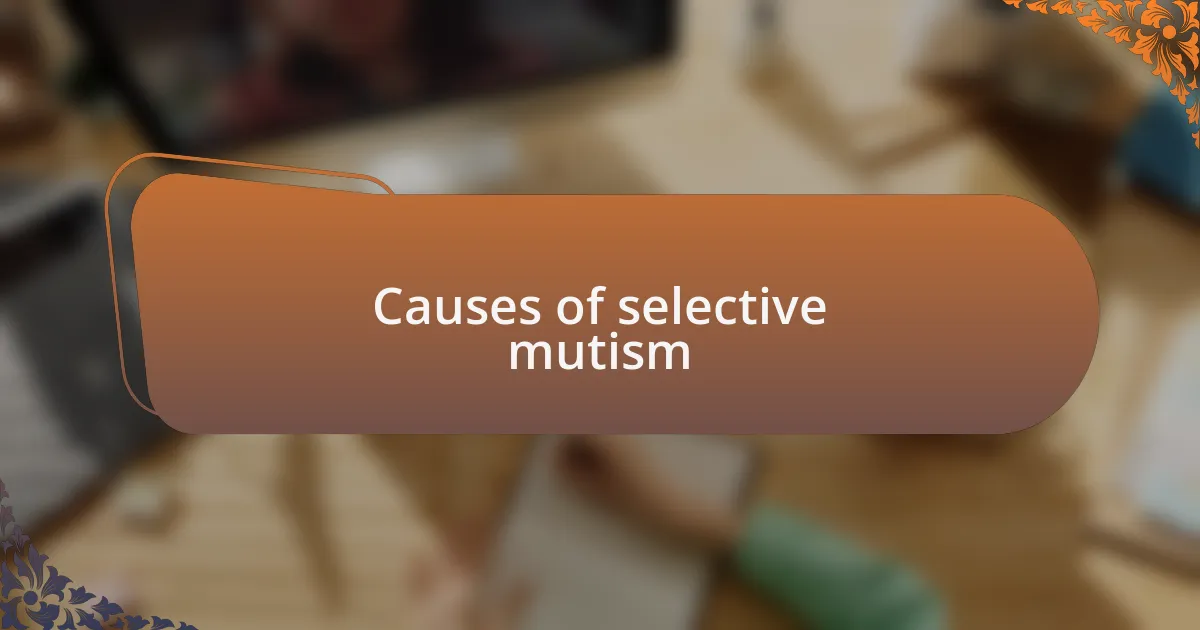
Causes of selective mutism
Selective mutism often stems from complex roots, intertwining genetic, environmental, and psychological factors. For instance, I’ve seen firsthand how children with a family history of anxiety disorders may be more prone to develop selective mutism. It’s like they inherit an invisible script that tells them social situations are fraught with danger, leaving them trapped in silence.
Environmental influences also play a significant role. In my experience, a child who faces overwhelming situations—like moving to a new town or starting at a different school—can find it hard to navigate the shifting social landscape. I remember a young boy who thrived in his familiar neighborhood but struggled to speak when he faced a new classroom. It made me reflect on how these changes can produce anxiety, making children retreat into their shells.
Lastly, traumatic experiences can deepen these challenges, leading to a stronger grip of selective mutism. Consider a child who has faced bullying or has been through a distressing event; the fear of speaking may transform into a protective response. Witnessing a child clenching their fists and avoiding interaction during a group discussion reminds me of those emotional scars that run deeper than we often realize. How can we reassure them that their voice is safe and valued in the world around them?
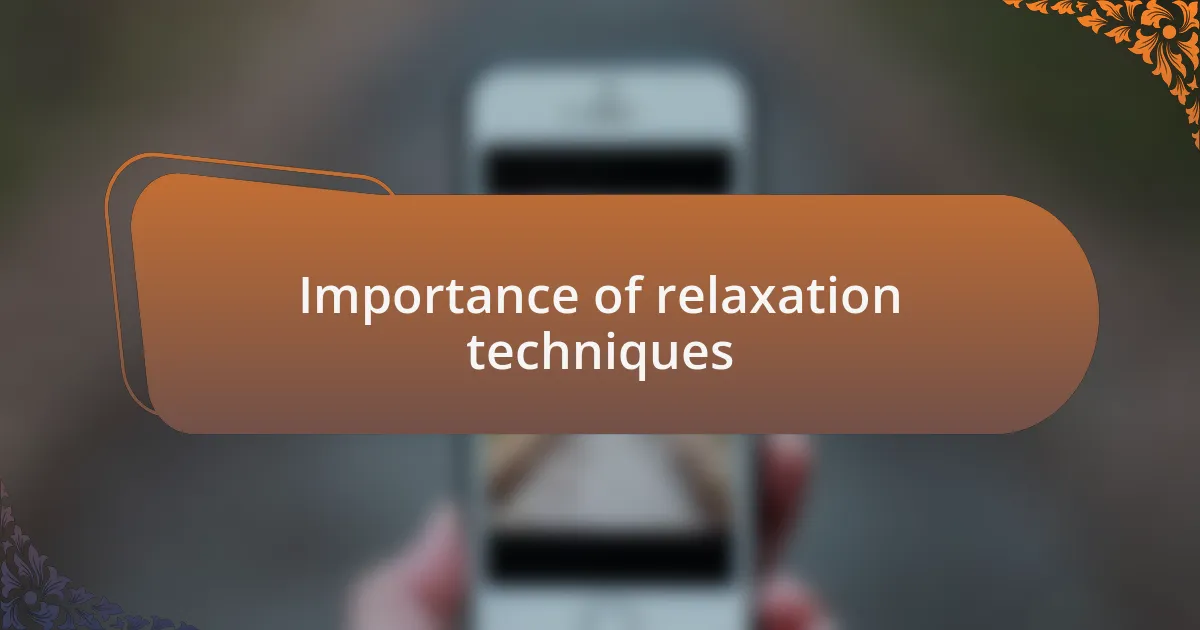
Importance of relaxation techniques
Relaxation techniques play a crucial role in helping individuals with selective mutism manage their anxiety. I remember a moment when I guided a young girl through deep breathing exercises before she had to speak in class. The way her shoulders relaxed and her breathing slowed made a noticeable difference in her confidence. Techniques like this can shift the focus from anxiety to a more centered, calming state.
Practicing mindfulness is another valuable relaxation method. There was a time when I worked with a teenager who often felt paralyzed by the expectation to speak. We established a routine where he would visualize a tranquil place before any speaking situation. Through this practice, he began to transform his fear into a sense of calm anticipation. How powerful it is to realize that taking a moment to breathe can open up spaces for genuine expression!
In my experience, consistency is key. When relaxation techniques become a regular part of preparation for speaking, they create a reliable safety net for individuals grappling with selective mutism. I recall a parent who diligently practiced calming exercises with her son each morning. Seeing his progress over time reinforced my belief that these techniques not only alleviate anxiety but also empower individuals to reclaim their voices in social situations. Wouldn’t it be wonderful if everyone could discover this empowerment?
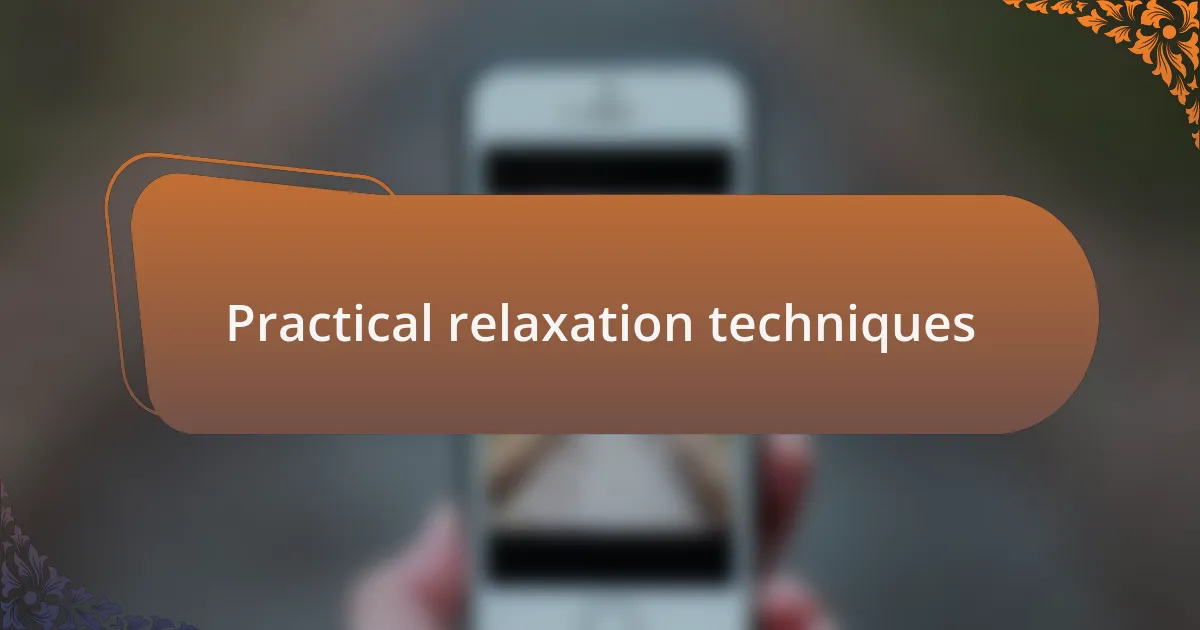
Practical relaxation techniques
One practical relaxation technique I’ve found to be effective is progressive muscle relaxation. When I guided a young boy through this exercise, we started with his toes and worked our way up to his head. I watched as his body slowly released built-up tension—his face softened, and a sense of calm enveloped him. Isn’t it amazing how something as simple as tensing and then relaxing each muscle can change the entire atmosphere of a moment?
Another method that has worked wonders is journaling before a speaking engagement. I recall a young woman who wrote her thoughts and feelings down before addressing her class. It turned her swirling anxieties into words, transforming her internal chaos into clarity. By putting pen to paper, she not only calmed her nerves but also felt a sense of control over her situation—what a relief it was for her to see her fears laid out in front of her!
I’ve also seen mindful breathing techniques make a significant impact. In one instance, I introduced a teenager to the “4-7-8” breathing method, where you inhale for four seconds, hold for seven, and exhale for eight. Observing her as she practiced this, I noticed her anxiety dissipating; her eyes sparkled with newfound determination. This kind of focused breathing can be a game changer—how often do we overlook something so simplistic yet powerful in calming our minds?

Personal experiences and strategies
Many times, I’ve turned to visualization techniques before speaking. I remember a moment when I guided a child through a visualization where he imagined himself standing confidently before an audience. The glow of positive energy and assurance on his face was undeniable. Isn’t it fascinating how our minds can shape our realities? Visualizing success can sometimes create a ripple effect, turning nervous energy into enthusiasm.
Another strategy that has proven effective for both me and others is finding a quiet space to listen to calming music. I often recall a session with a young girl who shared her favorite songs, those that wrapped her in a cocoon of tranquility. As she sat listening, her body relaxed, and her smiles replaced her fears. Music has this unique ability to speak to our emotions—what songs make you feel at ease before big moments?
Lastly, I’ve utilized the power of positive affirmations with various individuals. One inspiring story was from a shy boy who began each day by reciting affirmations like “I am confident” and “I can speak my truth.” Watching him transform his self-doubt into self-belief was uplifting. It’s remarkable how a few supportive words can change the narrative we tell ourselves, don’t you think?

Planning for a speaking event
When planning a speaking event, I’ve found that creating an outline can significantly ease my mind. One time, I meticulously mapped out my thoughts before a presentation and felt an incredible sense of clarity. Seeing everything laid out in front of me transformed my nerves into a focused excitement. Have you ever tried jotting down your ideas to organize your thoughts?
I always try to rehearse in front of a friendly audience, which, in my case, often includes family or close friends. Preparing in a supportive environment not only helps me refine my delivery but also builds my confidence. I recall a time when I practiced my speech with my sister; her encouraging nods made all the difference, reminding me that I wasn’t alone in this journey.
Moreover, I believe timing is key in the planning process. I tend to allocate specific times for relaxation and warm-up exercises the day before the event. There was a particularly memorable occasion when I scheduled a quiet morning to stretch and meditate, which left me feeling light and energized. Isn’t it transformative how carving out little moments of self-care can set the stage for success?